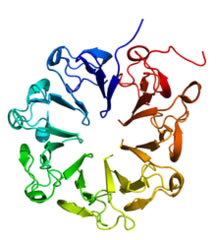Tanning Your Plants: The Curious Effects of UVA and UVB
While getting your tan on is a favorite holiday pastime, we often forget the nasty consequences of too much sunlight on our skin. UV light is harmful to plant tissue too, but research shows that it can also benefit our little green friends.
Sunlight is the portion of the sun’s electromagnetic radiation that includes infrared, visible, and ultraviolet (UV) light. It’s these ultraviolet light waves that can cause harmful radiation to our dermal tissue. But, how have our floral friends evolved to deal with this UV light energy?
What is UV light?
Let’s take a step backwards and look at the basics. Ultraviolet light is an electromagnetic radiation with a wavelength from 10-400 nanometers (nm). This is a shorter wavelength than visible light but longer than X-rays.
This radiation can be broken down into three bands:
UVA (320-400 nm)
UVB (290-320 nm)
UVC (100-290 nm)
Radiations with wavelengths from 10-180 nm are sometimes referred to as vacuum, or extreme, UV. These radiations propagate only in a vacuum. Thanks to the ozone layer, only UVA and UVB rays reach the Earth’s surface. UVC rays can’t make it through, which is lucky as they could have catastrophic effects.
How does UV light affect plants?
As sunlight shines down upon a crop, plants expose the surface of their leaves to capture solar rays. While some of this light energy is used in photosynthesis, some of it regulates different developmental processes—such as advancing growth in good conditions or causing deviations for survival during periods of stress—to optimize the photosynthetic processes and detect seasonal changes. This light-mediated development of form and structure is known as photomorphogenesis.
The different developmental or physiological changes are induced by a plant’s photoreceptors, which detect specific wavelengths of light. Photoreceptors are also sensitive to light quantity, quality, and duration.
For example, plants growing beneath the canopy use phytochromes to sense the reduced amount of light reaching the plant and regulate such processes as shade-avoidance, competitive interactions, and seed germination.
However, it is extremely difficult for scientists to match specific responses to individual photoreceptors. Typically, multiple photoreceptors will interact to produce a single change.
Also, some photoreceptors like phytochromes are sensitive to more than one light wavelength. (Phytochromes, which mediate many aspects of vegetative and reproductive development, are responsible for absorbing red and far-red light but also absorb some blue light and UVA radiation.) (See: On the Dawn of a Grow Light Revolution: How Plants Use Different Wavelengths for more information on this.)
When it comes to UV radiation, there are several other photoreceptors responsible for absorbing those wavelengths. Cryptochromes, phototropins, and Zeitlupe (ZTL) are the three primary photoreceptors that mediate the effects of UVA. UVB light is primarily mediated by the UV-R8 monomer (shown below, image credit WikiCommons).

It has been proven that UV light influences photomorphogenic responses including gene regulation, flavonoid biosynthesis, leaf and epidermal cell expansion, stomatal density, and increased photosynthetic efficiency. However, don’t forget that UV radiation can also damage membranes, DNA, and proteins.
That’s why many plants undergo photomorphogenic changes designed to protect them from these rays when their photoreceptors sense the presence of radiation. For example, numerous agricultural crops can synthesize simple phenolic compounds and flavonoids that act as sunscreens and remove damaging oxidants and free radicals.
In certain crop species, these phenolic compounds can be extremely desirable and it can be beneficial to the farmer to enhance this aspect of production.
How can growers use UV energy without causing damage to their crops?
Although this is a fairly recent field of botanical science, there are reports of dramatic increases in essential oil production by flowering crops grown under lightbulbs with higher UV output. Modern metal halide (MH) and ceramic metal halide (CMH) lamps often include precisely calculated and optimized amounts of UVA and UVB output.
Click to see the NEW HORTIVISION FINISHER GLOBE HERE!
High UV bulbs are generally recommended for use in the last two weeks of a flowering cycle once the generative development is completely established. This allows for a crop to continually develop in size and growth vigor while also protecting the flowers and canopy with increased resin production.
Like all aspects of horticulture, balance is the key to effective UV use. Too much or incorrect ratios of PAR/UVA/UVB will not help, but the correct amounts could encourage some incredibly useful results.
Timing is also an important part of UV application. When given UVB throughout the entire growth cycle, sensitive plants such as leafy greens often display reduced growth (plant height, dry weight, leaf area, etc.) and photosynthetic activity.
Generally, the effectiveness of UVB also varies both among species and among individual strains or genetics of a given species. If you’re looking to utilize UV in your garden, it’s worth discussing with your local hydroponics store about the best approach for your chosen plant species.
Overall, it’s worth discussing and researching the best applications of UV in your garden whilst catering to your specific plant’s physiological requirements.
If we use this technology correctly, we can enjoy the delicious benefits of plant sunscreen. This means your flowers will smell better, your fruit will taste superior, and your herbs will have a higher potency in the kitchen.
Enjoy the tan!
Thomas Forrest
Acknowledgements:
*Forrest. T.A, 2017, originally published in ‘Maximum Yield Indoor Gardening Magazine USA’, March Online Edition, available at: https://www.maximumyield.com/tanning-your-plants-the-curious-effects-of-uva-and-uvb/2/2990
